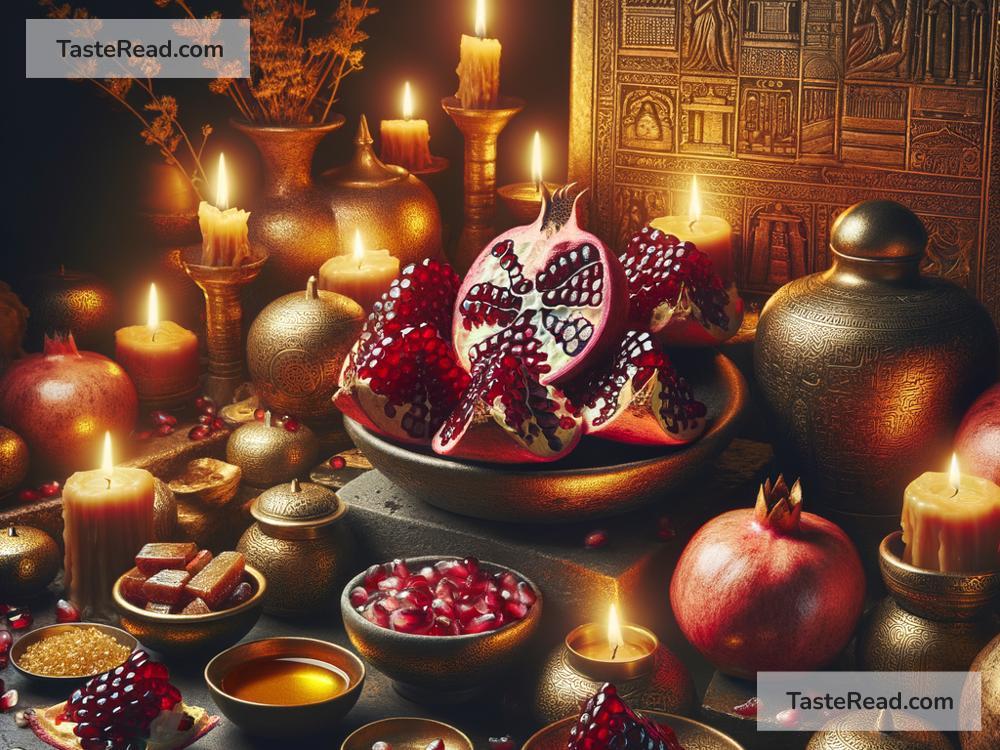The Ancient Rituals Involving Pomegranates: A Journey Through Time
Pomegranates have been loved by people for thousands of years, not just as tasty fruits but also as symbols of life, fertility, and spirituality. Their rich red seeds and sweet, tangy flavor have made them special in myths, religions, and rituals in many cultures. Even today, pomegranates hold significance, but did you know that in ancient times, they were often used in ceremonies and traditions? Let’s take a journey back in history and explore the fascinating rituals involving pomegranates.
The Symbolism of Pomegranates
Before we dive into the rituals, it’s important to understand what pomegranates represent. In many ancient cultures, the pomegranate was seen as a symbol of abundance, fertility, and prosperity because of its numerous seeds. Its bright red juice was also a reminder of life and blood. In addition, the fruit’s tough outer skin was often interpreted as protection and strength.
Pomegranates were associated with gods, goddesses, and sacred traditions. They were thought to hold magical or spiritual powers, bringing good fortune, healing, and connection to the divine.
Pomegranates in Ancient Egypt
The ancient Egyptians greatly valued the pomegranate and even included it as part of their rituals for the dead. Archaeologists have discovered pomegranate seeds buried in tombs, including that of Pharaoh Tutankhamun. These seeds were believed to help the dead in their journey to the afterlife, symbolizing rebirth and eternal life.
Pomegranates also made their way into Egyptian medicine and religion. Priests and healers used the fruit’s juice in potions and remedies, believing it had protective and healing properties.
Ancient Greece and the Myth of Persephone
In Greek mythology, the pomegranate plays a key role in the myth of Persephone, the goddess of spring and queen of the underworld. According to the story, Hades, god of the underworld, offered Persephone a pomegranate to eat when he kidnapped her. She ate a few seeds, which bound her to spend part of the year in the underworld and the rest in the world above. This myth led to the belief that pomegranates symbolized life, death, and the changing seasons.
In ancient Greek rituals, pomegranates were also associated with Hera, the goddess of marriage and childbirth, as well as Aphrodite, the goddess of love. Couples often included pomegranates in wedding ceremonies as a symbol of fertility and blessings for a happy marriage.
Pomegranates in Ancient Persia
For the ancient Persians, pomegranates were considered sacred fruits tied to love, victory, and immortality. The Zoroastrian religion, which originated in Persia, valued pomegranates as a symbol of creation and eternal life. In Zoroastrian New Year celebrations (Nowruz), pomegranates were often placed on the table as a sign of good fortune.
Persian warriors carried pomegranates into battle as a source of strength and resilience. The fruit’s vibrant color and many seeds were seen as a sign of unity and vitality, motivating soldiers to persevere.
Pomegranates and Judaism
Pomegranates have a deep connection to Jewish traditions and are mentioned multiple times in the Bible. For example, in the Torah, the high priest’s robe was decorated with pomegranate designs. The fruit was also one of the seven species of produce in the land of Israel, symbolizing abundance and divine blessing.
On the Jewish holiday of Rosh Hashanah, the Jewish New Year, pomegranates are traditionally eaten. It is said that the fruit’s many seeds represent the hope for plentiful good deeds in the coming year.
Pomegranates in Hinduism
In ancient Hindu rituals, pomegranates were seen as a fruit of the gods. They were often offered in ceremonies as a gift to deities. The bright color and juicy seeds were thought to represent health, prosperity, and fertility.
Hindu texts also mention pomegranates as a symbol of human life and the universe, with each seed representing a living soul. Pomegranates were even used in Ayurvedic medicine for their healing properties.
Pomegranates in Chinese Culture
Ancient Chinese rituals also valued pomegranates as a symbol of fertility and family unity. During weddings, pomegranates were offered as blessings for a large and happy family. The many seeds represented offspring and the continuation of family traditions.
Pomegranates were also believed to ward off evil spirits and bring good luck. They were often displayed as decorative motifs in art and embroidery to ensure prosperity.
The Legacy of Pomegranates
Though centuries have passed since these ancient rituals, pomegranates remain a powerful symbol in many cultures. Today, they are celebrated not only for their delicious taste but also for their historical and spiritual significance.
Pomegranates remind us of the deep connection between nature, humanity, and the divine. Whether used in religious ceremonies, shared at weddings, or eaten for good luck during New Year, the fruit continues to hold a special place in our hearts. Its timeless beauty, symbolism, and nutrients make it a true treasure of the ancient world.
So, the next time you enjoy a pomegranate, remember the stories and rituals that have surrounded this amazing fruit for thousands of years. You’re not just eating a sweet snack—you’re experiencing a piece of history!


